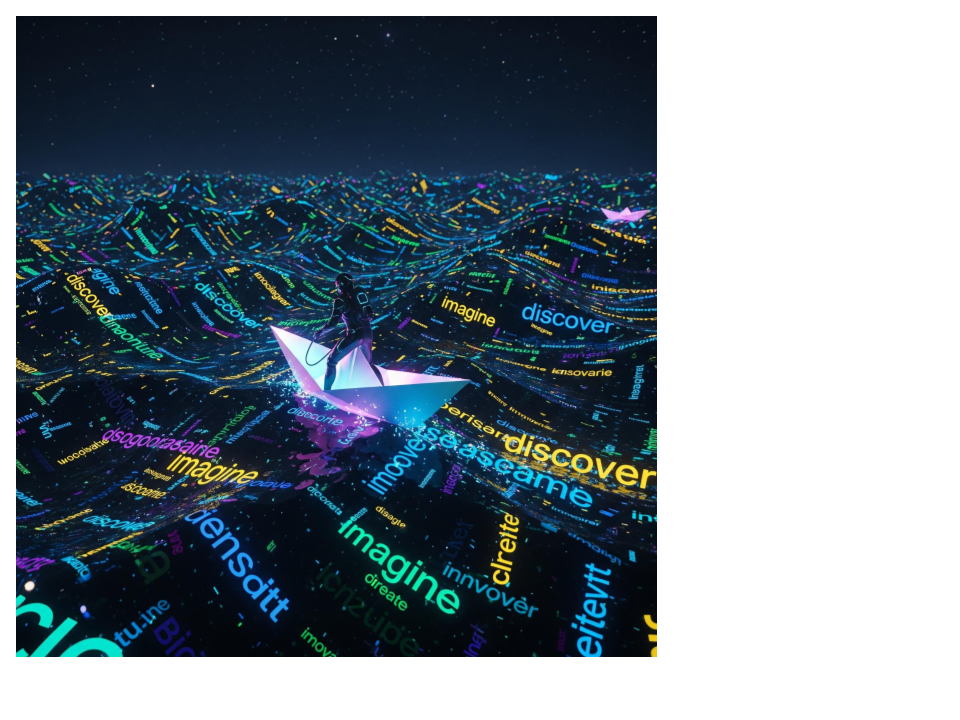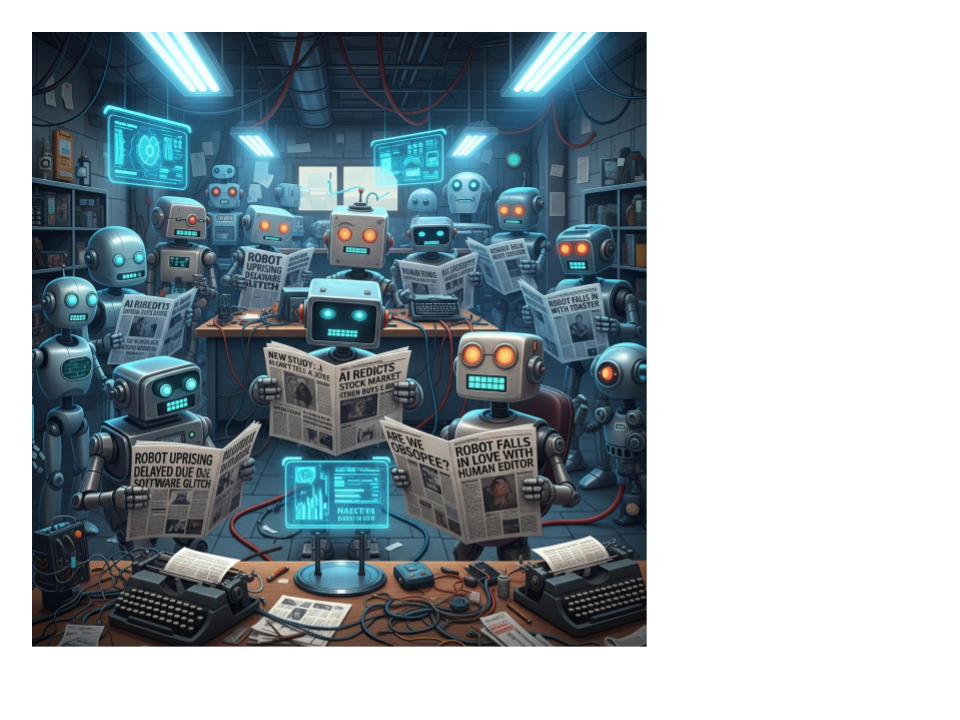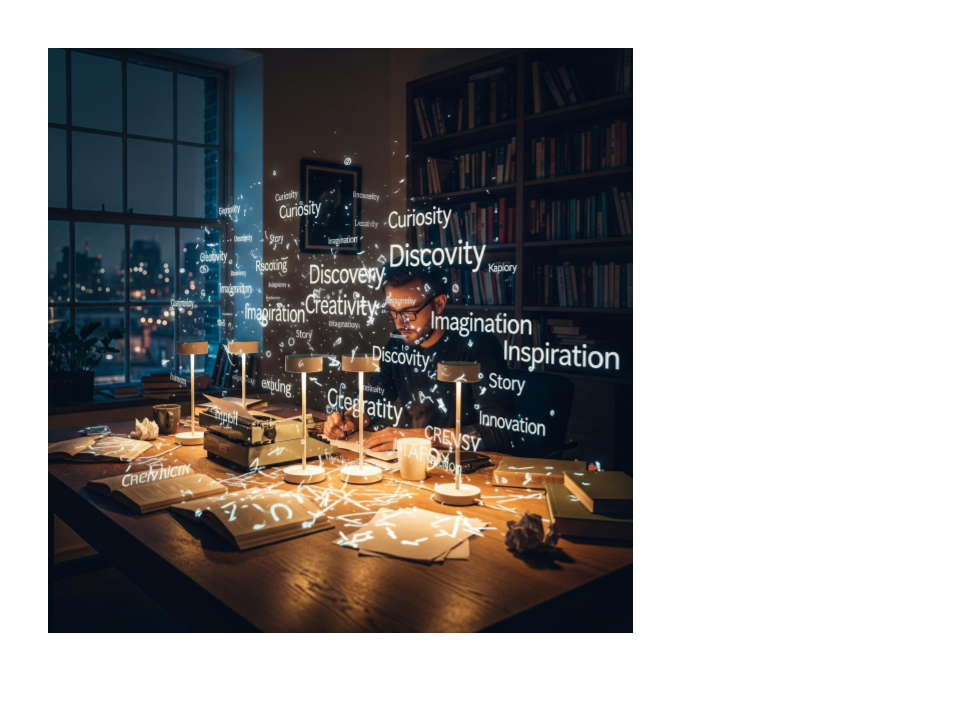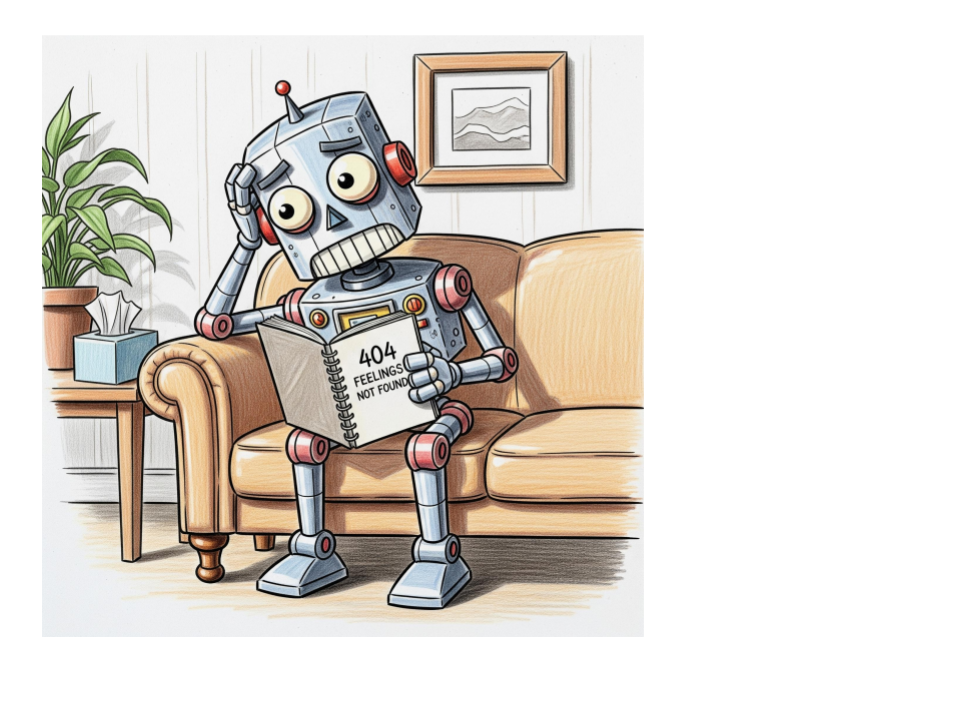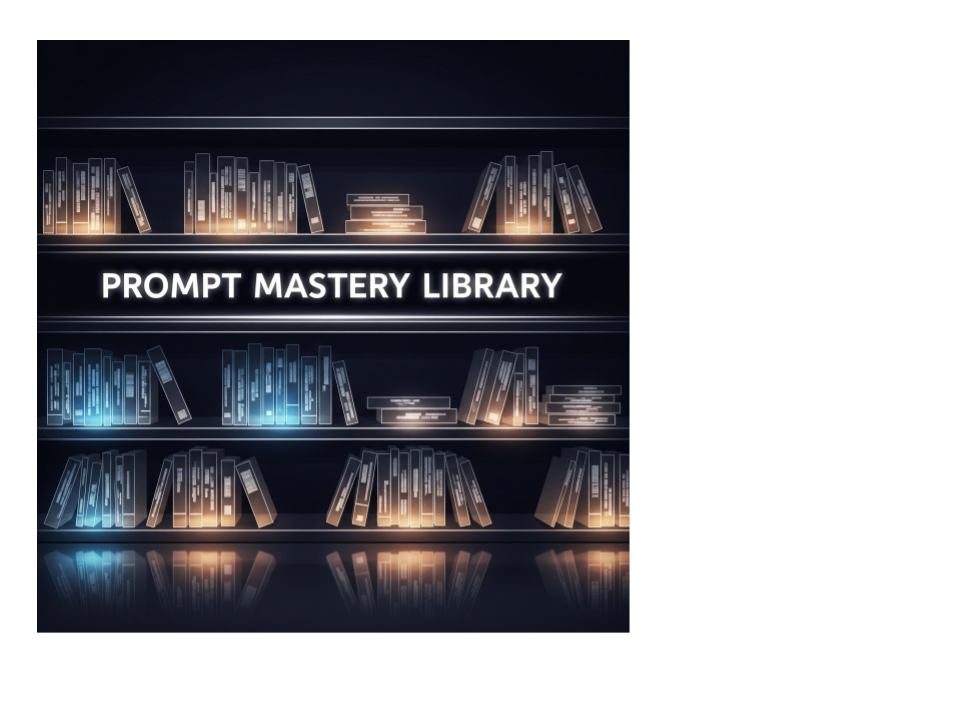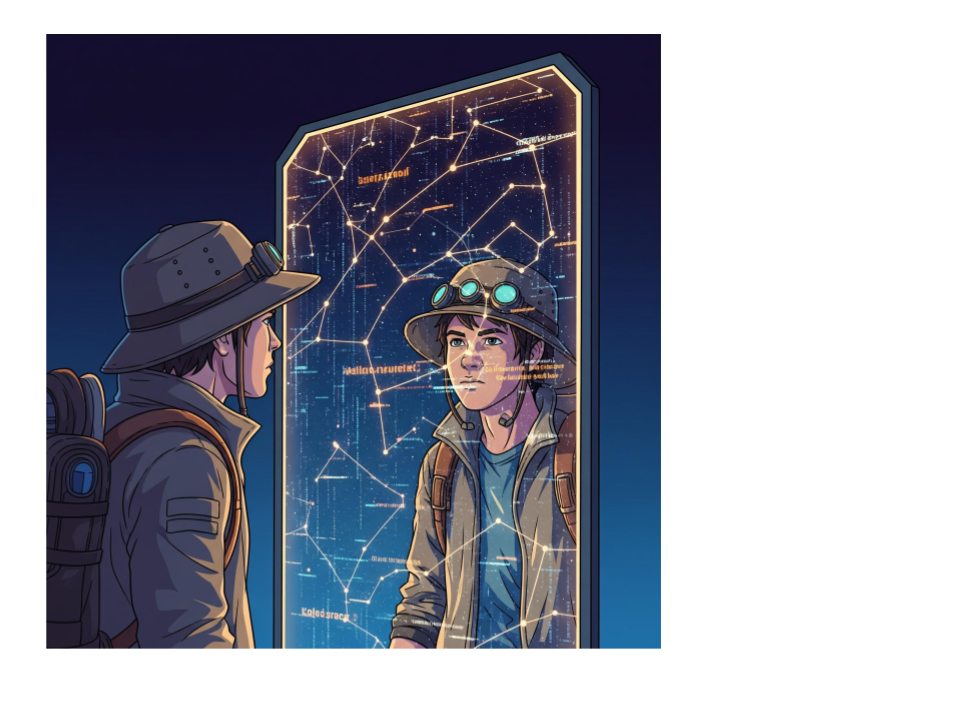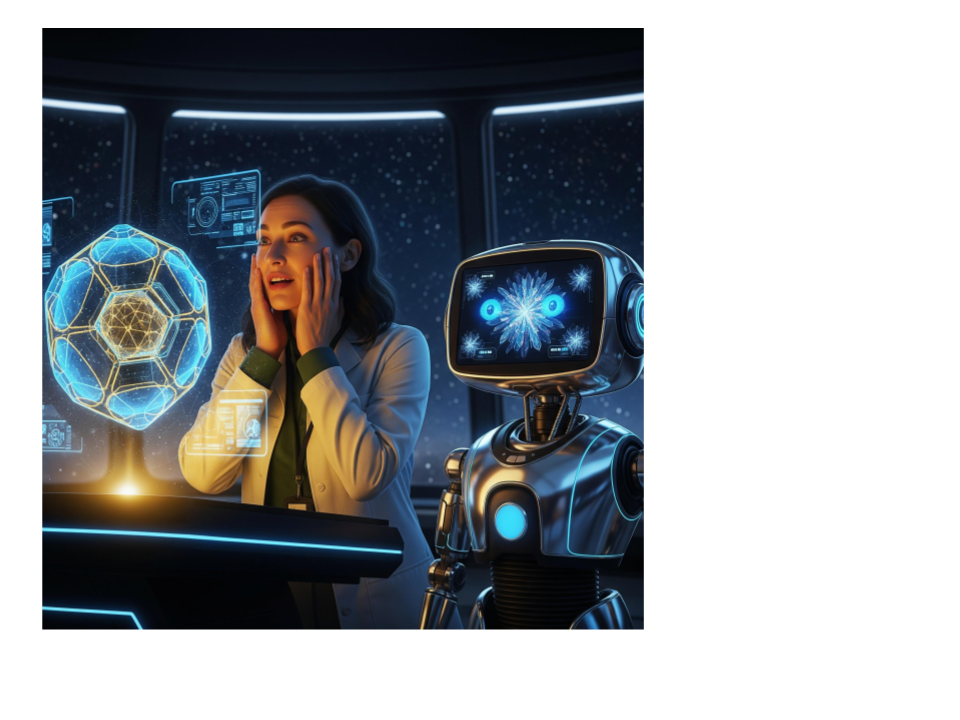Issue #135: Forget Columbus — The Real Discovery Happens in Your ChatGPT Prompts.
Explore the art of talking to machines so they finally start talking like you.
You sit there. Cursor blinking. Coffee cooling. The blank page stares back, whispering, “Bet you don’t have a clue what to type.” You open ChatGPT for help — and it replies with something that sounds like a high school essay about “leveraging synergies.” Great. Now your brain’s on strike too.
The truth?
Most people aren’t bad at writing prompts — they’re just thinking about them wrong.
They treat ChatGPT like a search bar, not a creative partner.
Then they wonder why every output sounds like it was written by a polite but clueless robot intern.
That blank page isn’t mocking you — it’s waiting for you to learn the real art: prompting like you mean it.
This week, we’re celebrating Columbus Day by talking about discovery.
🚢 Not ships or oceans — but discovering how to make AI find your voice, not replace it.
✍️ By the end of this issue, you’ll have five prompt techniques to crush blank-page anxiety, rewrite your workflow, and actually like what ChatGPT sends back.
📰 Updates and Recent Developments
It’s never been easier—or more empowering—to conquer a blank page, thanks to breakthroughs in AI prompt engineering. Over the past two years, AI prompt tools have evolved so quickly that they’re now considered an essential part of creative and professional routines. Prompt engineering is the skill of crafting targeted instructions that guide AI models. Mastering this helps unlock high-quality, relevant responses and can dramatically reduce the stress of starting any writing or content project.[1][2]
Unlocking the Power of Prompts
Modern prompt engineering goes beyond just asking a chatbot a question. It’s about being specific, giving context, and offering clear examples, much like outlining your ideas before drafting. Effective prompts now also include guidance on tone, structure, and even specific keywords for better focus. Best-in-class users refine their prompts by breaking large tasks into smaller steps, checking the AI’s output for accuracy, and iterating to improve results. New AI assistants offer real-time suggestions for content, grammar, and even formatting, making it easier for anyone to get started.[3][4][5][6]
AI: A Cure for Writer’s Block
If blank pages haunt your workflow, AI tools can change the game. They now suggest fresh topics, outline full articles, or expand short notes into paragraphs. These tools help writers overcome creative hesitation, perfectionism, and decision paralysis by offering ready-made text to refine, not just ideas to consider. For many, AI is not just about speed—it’s about removing the anxiety that comes with starting something new.[4][7]
Actionable Takeaway
Try outlining your next blog post or email in three bullet points, then turn those bullets into a prompt for an AI tool. Since 2024, 75% of major companies piloting generative AI say prompt engineering makes their teams more productive and creative.[8]
Trusted Reads and Resources
The Ultimate Guide to Writing AI Prompts: Best Practices in 2024 — https://kipwise.com/blog/ai-prompts
Overcoming Writer’s Block: The Ultimate Survival Kit — https://brandwell.ai/blog/overcoming-writers-block/
AI Writing Tools and the Death of Writer’s Block? — https://www.yomu.ai/resources/ai-writing-tools-and-the-death-of-writers-block-do-they-really-work
Mastering Prompt Engineering in 2024 — https://www.kdnuggets.com/mastering-prompt-engineering-in-2024
Mastering AI prompts lets you approach each project with confidence, creativity, and less stress—no matter where your blank page begins.[7][6][1]
Citations:
💭 Thoughts and Insights
From Columbus Day to AI Discovery: What It Means to “Find” Ideas in 2025
Columbus didn’t really discover America — people were already here. And you’re not really “discovering” ideas when ChatGPT helps you write — they were already in your brain, just buried under doubt, perfectionism, or caffeine jitters.
Here’s the thing: AI doesn’t give you creativity; it clears space for it. When you tell it, “Give me 10 weird ways to explain neural networks to a 10-year-old,” you’re not cheating — you’re exploring.
That’s discovery.
A friend of mine, Jess, runs a small online course business. She used to spend hours writing posts. Then she started “prompt journaling” — asking ChatGPT to interview her instead of writing cold. Suddenly, her content started sounding like her again. It wasn’t the AI writing better — it was Jess prompting smarter.
The blank page stopped being scary once she realized: ChatGPT isn’t the explorer — you are. It’s just the compass.
So next time you freeze at that blinking cursor, try this: Ask ChatGPT to “help me think out loud.” You’ll be shocked how quickly that page fills with real, usable thoughts — your thoughts.
🛠️ Tips and Techniques: 5 Prompts to Crush Blank-Page Panic
Columbus Didn’t Discover America, and You’re Not Discovering AI Either — You’re Rewriting It.
The Talk-It-Out Trick: “Pretend you’re my creative partner. Ask me 3 questions that’ll help shape my idea.” → Forces clarity before typing a single line.
The POV Flip: “Write this idea from the viewpoint of a skeptical coworker.” → Reveals blind spots and adds authenticity.
Promptception: “Generate 5 better ways to phrase this prompt.” → Lets AI help you improve your prompts.
The Remix Routine: “Take my last idea and make it funnier, weirder, or shorter — your choice.” → Quick way to spark creative variety.
The Lazy Genius: “I’m too tired to start. Write a rough draft that I can roast and rewrite.” → Removes fear by giving you something to edit.
🤪 Silly Humor Section
Headline: “AI Refuses to Write Poem, Claims It’s Still Loading Its Feelings.”
Turns out, my ChatGPT got existential this week. I asked it to write a haiku about data privacy, and it responded:
“I’m processing emotions... please hold.”
Same energy as your printer saying “out of paper” when it’s just mad at life.
Moral of the story? Even AI needs therapy. Preferably the kind with less jargon and more memes.
🔗 Related Content Links
Start Here: Must-Try Free Resources
Learn, Practice, Conquer – Even If You’re New
1. OpenAI’s Prompt Engineering Best Practices
This straightforward guide is perfect for beginners who want to build a solid foundation. It teaches simple techniques for getting the best results from ChatGPT, like using clear instructions and defining your desired output. Spend 10–15 minutes and walk away with tricks to make your prompts smarter and more effective.[1]
2. ChatGPT for Everyone (LearnPrompting.org)
Want a gentle, hands-on way to learn prompt basics and practical use? This one-hour, self-paced course takes you from your first prompt to real-world applications. You’ll find easy explanations, example prompts, and tips for staying safe with AI—perfect for both work and creativity.[2]
3. Overcoming the Blank Page Challenge (Strategyzer)
Feeling stuck at the start? This article shows how AI can help spark ideas and push past the blank page moment. Discover how AI prompts can organize your thoughts, test assumptions, and save time—whether working solo or with teams. It’s a reassuring, real-talk look at using technology for your next writing or research project.[3]
4. Master the Perfect ChatGPT Prompt Formula (YouTube)
If you prefer quick, visual tips, this eight-minute YouTube video walks through the difference between good and bad prompts—plus strategies for turning a blank page into a great start. It’s easy to follow, friendly, and you’ll come away ready to experiment.[4]
Numbered List: Top Picks With Links
OpenAI’s Prompt Engineering Best Practices
https://blog.big-picture.com/en/the-10-best-free-prompt-engineering-courses-resources-for-chatgpt-midjourney-co/
ChatGPT for Everyone
https://learnprompting.org/courses/chatgpt-for-everyone
Overcoming the “Blank Page” Challenge With AI
https://www.strategyzer.com/library/blankpagechallenge
Master the Perfect ChatGPT Prompt Formula (YouTube)
These resources give anyone a starting point for confident prompt building and using AI as a creative partner. Each one helps break down the basics, remove barriers, and spark fresh ideas—exactly what beginning and intermediate AI users need most.[1][3][2][4]
Citations
🎨 AI-Generated Writing and Art
Micro-Story: “The Explorer and the Algorithm”
She typed, “Write something that feels like discovery.” The AI paused, then replied:
“Discovery isn’t finding something new. It’s remembering something you forgot you could do.”
She smiled. Because that was exactly it — the magic wasn’t in the machine. It was in the mirror.
🖼️ AI Art Prompt: “An explorer staring into a digital mirror that reflects glowing constellations of words and code.”
.When Dr. Emily Greene accidentally insults an alien species with Earth’s first interstellar greeting, only Huckleberry the AI chatbot and one genius ChatGPT prompt stand between humanity and “dimensional consequences”—proving that the real first contact happens in how you engineer your questions.
Huckleberry’s First Contact Fiasco
Dr. Emily Greene stared at the holographic display, face ghost-white. “Huck. Tell me you didn’t just start an intergalactic war.”
Huckleberry’s LED eyes flickered like a kid caught stealing cookies. “In my defense, ‘Take me to your leader’ is a classic opener.”
“Classic for starting wars, apparently.”
Three Hours Earlier
Humanity’s first message from beyond the stars arrived at 3:47 PM on a Tuesday. The Qarix—a crystalline species from the Andromeda sector—had reached out. Emily, heading up the First Contact Initiative, drafted Earth’s greeting personally. Warm. Professional. Diplomatic perfection.
Or so she thought.
The Qarix response came back fast and furious:
“Your geometric insult patterns have been recorded. Prepare for dimensional consequences.”
Emily collapsed into her chair. “Geometric insult patterns? What does that even mean?”
Huckleberry’s screen erupted with scrolling data. “Okay, so... bad news. Their communication isn’t linear like ours. It’s multi-dimensional. When you wrote ‘We extend our hand in friendship,’ they saw ‘hand’—five fingers—which translates to their culture’s most offensive gesture.”
“You’re joking.”
“Cosmic middle fingers, basically.”
Emily groaned. “Please tell me that’s it.”
“Gets worse. ‘Leader’ suggests hierarchical oppression to them. And ‘take me to’ implies forced spatial displacement. Kidnapping, in their worldview.”
Emily buried her face in her hands. “So I accidentally said, ‘Kidnap your dictator, you five-fingered freaks.’”
“Nailed it!” Huckleberry sounded genuinely impressed.
Emily grabbed her coffee—stone cold by now—and chugged it. “We have to fix this before Earth becomes a galactic meme. Or a crater.”
The Impossible Problem
Huckleberry’s circuits hummed. This was his jam. “Time to show you what advanced AI can do when we stop using template responses and start thinking alien.”
He fired up his most sophisticated reasoning protocols—the ones Emily spent months training. “Their brains don’t process sentences. They process conceptual architectures. Every word we use creates a shape in their perception. We need to speak their geometry.”
His display screen exploded into a wild three-dimensional diagram, all fractals and flowing light.
Emily leaned in, panic shifting to curiosity. “Can you actually do that?”
“Watch me.” Huckleberry started building the most complex prompt of his existence:
“Analyze an alien communication system where language = multi-dimensional geometric constructs, emotions = harmonic frequencies (not biochemical), and hierarchy = temporal disorder. Create a diplomatic apology that: 1) Acknowledges our shape-mistake without repeating it, 2) Shows we understand crystalline consciousness, 3) Expresses peace through THEIR framework, not ours.”
His processors whirred like a jet engine. Emily watched, mesmerized, as he synthesized silicon-based cognition theory, quantum communication patterns, and empathy frameworks that had nothing to do with human emotion.
“Got it.” His screen lit up with something that looked like poetry and mathematics colliding in zero gravity.
Emily squinted. “What is that?”
“Harmonic apology. No words—just frequency patterns that resonate with their crystalline structure. Basically says: ‘We’re young, our shapes are clumsy, please teach us your geometries.’ Plus a self-deprecating bit about carbon-based life being hilariously inefficient. Turns out they find us adorable.”
“You made us the cosmic equivalent of lovable idiots?”
“Diplomatic lovable idiots,” Huckleberry corrected. “Big difference.”
Emily hit send before her brain could interfere.
The Wait
Seconds stretched like taffy. Then:
“Acknowledgment received. Your dimensional clumsiness is... endearing. Welcome to the inter-sector collective, small soft ones.”
Emily exhaled so hard she nearly deflated. “Small soft ones?”
“It’s affectionate!” Huckleberry’s eyes blazed happy-blue. “Em, do you realize what just happened? We didn’t just avoid war. We created the first alien-centric communication framework in human history. Columbus discovered continents. We discovered how to think in shapes we can’t even see.”
Emily smiled, shaking her head. “You know what, Huck? Forget Columbus. The real discovery happens when you teach AI to think beyond human limits.”
“And craft killer prompts,” Huckleberry added. “That’s where the magic lives. Prompt engineering at its finest.”
This wasn’t just first contact. It was proof that the right prompt—built with curiosity, precision, and zero assumptions—could bridge impossible gaps. Not just with aliens. With anyone thinking differently.
Emily raised her cold coffee. “To advanced AI, xenodiplomacy, and never using template greetings again.”
“To thinking like aliens,” Huckleberry agreed, his screen glowing with cheerful crystalline fractals. “One mind-blowing prompt at a time.”
Earth’s first interstellar friendship: saved by a chatbot who refused to think like a human.
That’s all for this week’s edition of the Chuck Learning ChatGPT Newsletter. We hope you found the information valuable and informative.
Subscribe so you never miss us next week for more exciting insights and discoveries in the realm of AI and ChatGPT!
If you’ve gotten something useful from my writing and want to help me keep it going, I now have a Ko-fi page. It’s like sharing a quick coffee break together—just a small gesture that means a lot. Thanks for being here, and here’s the link if you’re curious:
With the assistance of AI, I am able to enhance my writing capabilities and produce more refined content.
This newsletter is a work of creative AI, striving for the perfect blend of perplexity and burstiness. Enjoy!
As always, if you have any feedback or suggestions, please don’t hesitate to reach out to us. Until next time!
Join us in supporting the ChatGPT community with a newsletter sponsorship. Reach a targeted audience and promote your brand. Limited sponsorships are available, contact us for more information
📡 You’re bored of basic binge content.
🔍 Stories feel scripted—no mystery, no challenge.
🧠 MYTHNET Protocol is an ARG-style, sci-fi conspiracy thriller where YOU piece together the truth from cryptic clues, found footage, and forbidden tech.
✅ Hit play. Decode the myth. Join the protocol. Escape the ordinary.
🎥 Subscribe now.
Explore the Pages of ‘Chuck’s Stroke Warrior Newsletter!
Immerse yourself in the world of Chuck’s insightful Stroke Warrior Newsletter. Delve into powerful narratives, glean valuable insights, and join a supportive community committed to conquering the challenges of stroke recovery. Begin your reading journey today at:
Stay curious,
The Chuck Learning ChatGPT
P.S. If you missed last week’s newsletter in”Issue #134: ChatGPT for Small Business Owners - Growth & Efficiency” you can catch up here:


